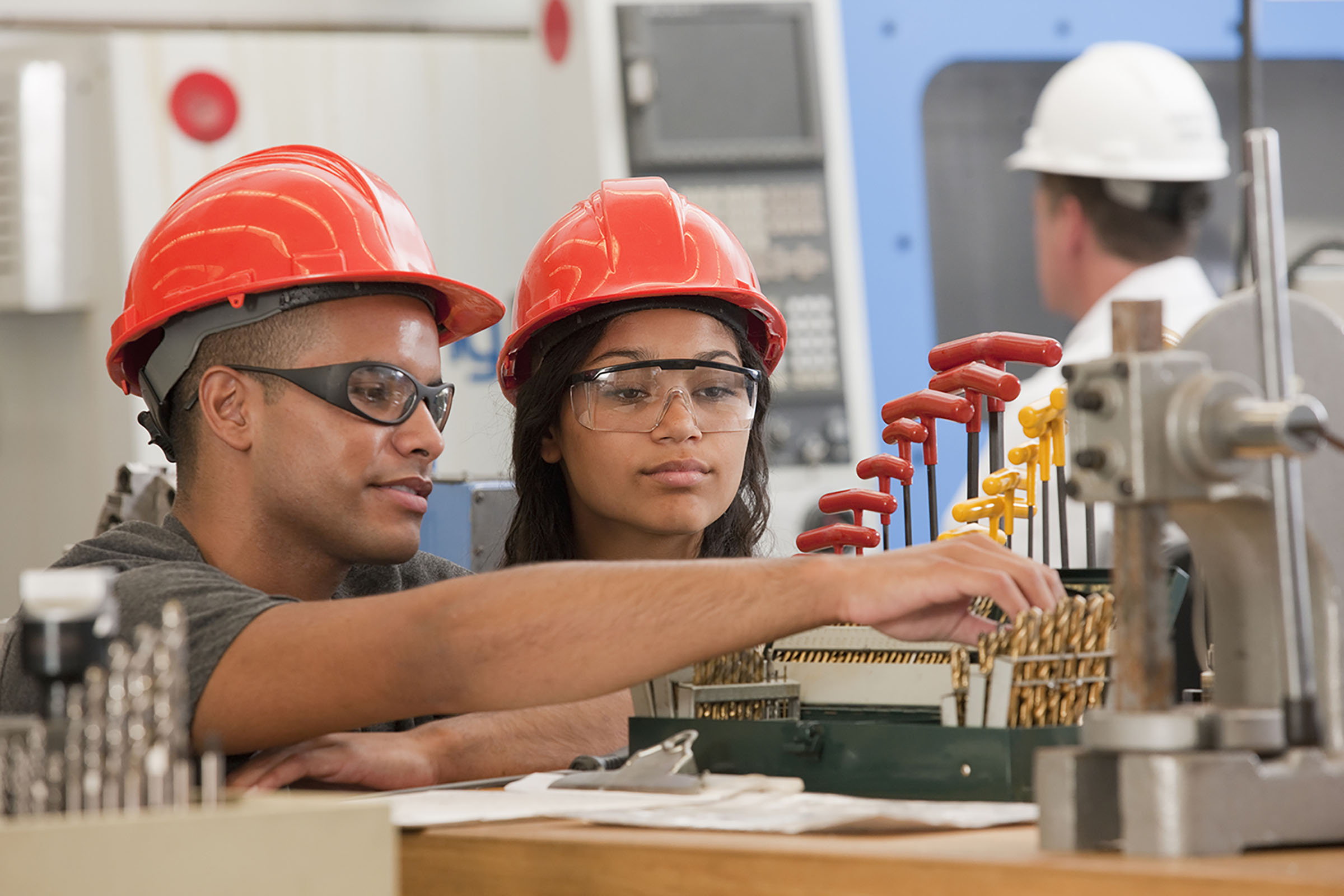High school. For most college students, these two words bring back a flood of visceral memories.
They can clearly visualize the cinder block walls, the football games and the pep rallies that dominated the social scene. AP and IB classes were all the rage (and the source of a different type of rage), and their school colors were proudly emblazoned on posters, banners and everyday apparel.
This is the typical high school experience, the stuff of quintessential coming-of-age movies and modern teen literature.
But what about the atypical high school experiences? Are there places for students who aren’t made for the average high school and who want more hands-on work and career preparation?
Thankfully, there are, and they are called vocational schools. John Hughes may never have directed a blockbuster film set in such specialized academies, but these unique institutions are viable options for students and are worthy of recognition and widespread promotion.
Vocational high schools provide students with alternative educational avenues that fit unique niches not generally covered in traditional curriculums.
While these schools are more fashionable in Europe, they often carry an unfavorable reputation in the U.S., seen as places for low-achieving students, according to U.S. News. But this is an extremely short-sighted view of institutions that actually have the power to save the American workforce.
Trade schools were defined by the 1990 Perkins Act as “organized educational programs offering sequences of courses directly related to preparing individuals for paid or unpaid employment in current or emerging occupations,” the U.S. Department of Education reported.
While students may be able to take a shop class or a technology class at a traditional high school, vocational schools are specifically structured to fully prepare these students for careers. Great Schools Partnership, a nonprofit school-support organization, identified the common subject areas that vocational schools may cover.
“Career and technical programs—depending on their size, configuration, location, and mission — provide a wide range of learning experiences spanning many different career tracks, fields, and industries, from skilled trades such as automotive technology, construction, plumbing, or electrical contracting to fields as diverse as agriculture, architecture, culinary arts, fashion design, filmmaking, forestry, engineering, healthcare, personal training, robotics, or veterinary medicine.”
But why are vocational schools so vital?
Training skilled workers has always been essential, but since the recession the necessity has intensified. Unemployment rates skyrocketed after the United States’ financial crisis and there is still massive unemployment in the country.
It is therefore shocking that in Aug. 2017, the U.S. Labor Department announced there were a record-level number of job openings in the country at 6.2 million, according to CNN. The problem is that companies simply cannot find enough skilled workers to fill these positions.
As a country, the U.S. needs to take vocational and technical education much more seriously. Students in Germany take aptitude tests as early as middle school to determine their strengths and what route of education best fits their skills and interests.
Teens are still more than able to move on to college after completing their vocational education, but at least they’ve had the chance to explore their occupational interests and gained skills they could use even in a part-time job.
Increased support behind vocational schools will only magnify the benefits both the workforce and students can reap. Trust me when I say I know how influential this preparation can be.
When I was in the seventh grade, my mother and I went on a tour of a vocational school in Monmouth County, New Jersey, called Communications High School (CHS). From its plain exterior, CHS looks like any other public high school, except about a third of the size.
The moment I stepped inside, I felt what I would earnestly describe as a cosmic pull. Never in my life had I encountered a place that instantly captivated my most profound intrigue and spoke to my inner ambitions and creative outlook that felt out of place in my middle school setting.
Communications High School is defined on its website as “a personalized academy with a career focus” that “provides a rigorous theme-based curriculum in conjunction with community, industry and higher education partnerships.” Unlike some other vocational schools, CHS is a four-year, full-time high school, with elective classes designed specifically to fit the theme of communications.
The school’s facilities include state-of-the-art technical equipment, a fully functional printing press and a television and radio studio that underwent a $1.5 million dollar renovation in 2015. Elective classes include, but are not limited to: advanced journalism, Java, live studio production, advanced digital video, illustration and design, web design and social media marketing and more.
I could not have envisioned a more enriching high school experience, and one that has opened countless doors for me. As a student, I attended the Columbia Scholastic Press Association’s annual Spring Convention, obtained a public relations internship and represented my school’s chapter of SkillsUSA — a competition-based, national organization designed specifically for vocational school students — at the state level.
The education, experience and guidance I received at CHS led me on my path to pursue public relations and journalism at the collegiate level and gave me insight into my future career that I could not have received anywhere else.
Imagine an America where students can put themselves in the best place possible to receive the job or the skill set they want, or an America where unemployment rates drop significantly thanks to the millions of capable and skilled workers produced by top-notch vocational schools in every state and in various disciplines.
If people want to see this America, if they want to be a part of the strongest and most skilled workforce conceivable, then they must champion vocational education.
If, as a college student, you are not convinced this issue will affect you, I would advise you to think again. In the imminent future, many of us could start paying taxes — taxes that will go to the American education system.
Everyone should be dedicated to making sure their money and efforts are going toward providing the best educational opportunities possible. They should invest in students and their skills that deserve more attention than traditional high schools can provide.
It is time for a rebirth of vocational high schools in the U.S. With the support and belief of the American public, vocational schools can continue to flourish and empower new generations of students to spearhead a revitalized movement — and by extension, create a more secure, more auspicious future for a fracturable nation.

















